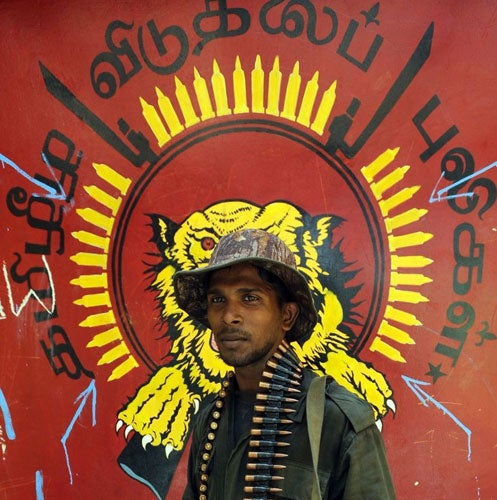Massacre in the Sri Lanka 'safe zone'
Thousands of civilians are caught in fighting as army encircles the Tamil Tigers after seizing last rebel town

Dozens of civilians in Sri Lanka are feared dead or wounded after a so-called "safe zone" set aside for refugees came under artillery fire.
It is believed that 250,000 people have become caught up in the end-game of the island's bitter civil war as the military continues to drive the Tamil Tigers into an ever-diminishing area of jungle following the capture of Mullaittivu, the rebels' last major town, at the weekend. Humanitarian convoys, on which the civilians depend, have not been able to reach them for almost two weeks.
UN workers, taking shelter inside a safe area designated by the Sri Lankan government, told how they twice came under fire. About 20 people were killed and many more were wounded in the bombardments. The workers said it was unclear who had fired the shells but it is understood they came from both the government and rebel positions.
Speaking last night from, Colombo, the UN spokesman Gordon Weiss, said: "This is a serious crisis. Our staff were in the designated safe area and there was incoming fire from artillery shells. There were shells which killed and wounded dozens of people, the last of which was Monday morning when 10 people were killed and many more were wounded. They have seen this first hand."
Mr Weiss said he was aware of an unconfirmed report from the regional director of health services that said 300 people had been killed.
The Red Cross said hundreds of Sri Lankans had died during the past two weeks, based on body counts carried out by its staff. "People are being caught in the crossfire, hospitals and ambulances have been hit by shelling, and several aid workers have been injured while evacuating the wounded," said Jacques de Maio, head of the South Asia operations. "When the dust settles, we may see countless victims and a terrible humanitarian situation."
The UN Secretary General Ban Ki-moon has issued a statement urging both sides, "to accord immediate and absolute priority to ensuring the protection and well-being of civilians, including humanitarian aid workers".
The growing humanitarian crisis in Sri Lanka comes as government troops continue to force back the separatist Liberation Tigers of Tamil Elam fighters after a decades-long civil war. After capturing Mullaittivu on Sunday, the military is now pushing along a stretch of coastline to try and encircle the rebels, a manoeuvre they believe will be completed within weeks. Yesterday, the military, which has denied firing into the safe zone, escorted journalists into Mullaittivu, a town now largely deserted. As government forces approached, the rebels apparently ordered residents into the jungle and stripped the town of anything that might be of use.
Journalists have been blocked from entering much of the conflict zone and media organisations questioning the military's tactics have been intimidated and even killed, meaning that the government's efforts to crush the Tigers is a largely hidden conflict. So too, is the plight of the hundreds of thousands of civilians, trapped in an area measuring around 115 sq miles. Mr Weiss said most of the civilians, driven north and east by the Sri Lankan army, were now stranded along the A35 road that leads north- west from Mullaittivu – most with just the few possessions that they can carry. It is along the A35 that the government last week designated the "safe zone" for civilians.
A report on the pro-LTTE website TamilNet said: "Unattended bodies and injured people unable to move are lying around everywhere."
Yesterday a convoy ferrying 250 seriously wounded from Puthuku-diyiruppu to a hospital in Vavuniya was forced to turn back after the road was closed.
Join our commenting forum
Join thought-provoking conversations, follow other Independent readers and see their replies
Comments
Bookmark popover
Removed from bookmarks